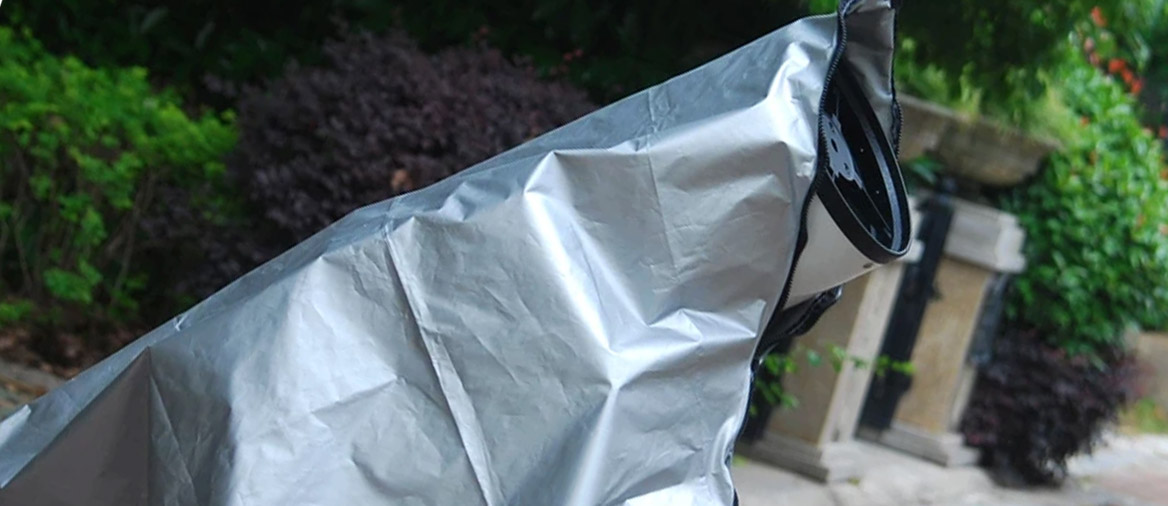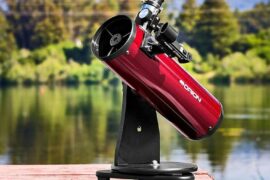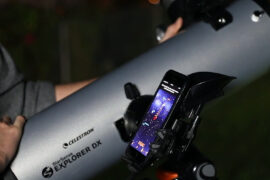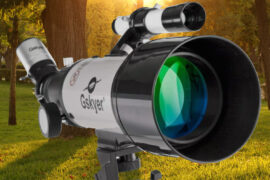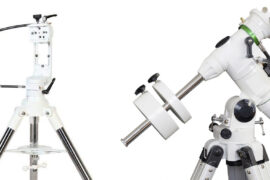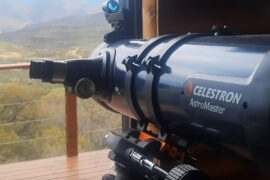Taking good care of your telescope is a must if you want to increase its longevity and make the most out of the money you spent on it. it will also keep it in good shape to keep your viewing experience enjoyable because there aren’t many things more frustrating than trying to troubleshoot a faulty telescope or any optic device for that matter.
A good telescope cover is essential to maintain a telescope performing at its best. It seems like such a small detail, and it might be, but it will save you from unexpected scratches, stains, and misaligned lenses.
This guide will help you understand and compare the most popular telescope covers so you can pick the one that is right for you.
If you want to skip directly to the recommendations, click here.
What does a telescope cover do?
A telescope cover is a sheet of fabric to cover and protect a telescope while it is not being used. It keeps the dust away, protects it from water and smoke.
But how is that different from any other piece of impermeable cloth?
Well, the high-quality telescope covers are also coated to reflect UV rays, prevent dew buildup, and have a fixing strap at the bottom to almost close it like a bag.
Are those features important?
We have already talked about how we don’t recommend leaving your telescope outside, but if for some reason you do, or if you are going to store it near a window or a garage door that constantly opens potentially letting inside rain, dust, or direct sunlight, then those all features will come in handy and the telescope cover a good investment.
How to choose a telescope cover
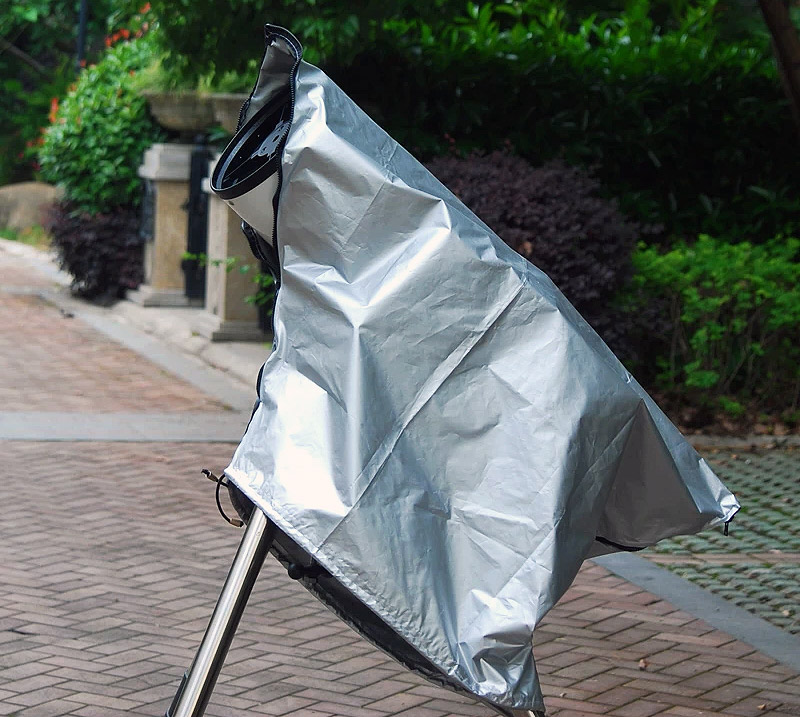
Telescope covers are relatively easy to shop for, there are only a few things to consider so you can pick the right one:
Size
The most important thing when looking for a cover is making sure it is going to fit your telescope comfortably.
The specifications should tell you the maximum length the cover fits and then you only need to match it to the length of the tube of your telescope.
For refractor telescopes, the length is going to be very close to the telescope’s focal length so just knowing that will tell you if the cover will fit.
For Newtonians it gets a bit trickier because the focal length does not equal the length of the tube so you will need to use a good old measuring tape just to make sure you have the correct size.
Cassegrains are very compact and should fit on the smaller covers.
The only special case here is Dobsonians that due to their shape require a cover with a different design than the rest, but there are covers specially made to fit them.
Waterproof
A good cover must be waterproof and impermeable. Even if you will keep the telescope indoors, there are always the occasional drops flying through the window or worse, unidentified moisture or leaks.
Coating / Heat shielding
The silver coating you will see in high-quality covers serves two purposes. It reflects UV rays to keep them away from the mirrors, and is thermally stable, meaning it prevents the interior and the telescope from heating up. You don’t want your telescope exposed to too much heat because this weakens the optics glue, messing up the mirror/lens alignment, and it makes it so you have to wait longer for the telescope to acclimate to the weather every time you use it to get proper views.
Are telescope covers worth the money?
I’d say yes. If you have already invested hundreds or even thousands of dollars into a telescope, spending a small fraction of that to keep it safe is worth the money.
It is true there’s nothing too special about telescope covers and an old sheet can still cover it from dust, but all the other features do make a difference long term, especially if you plan to keep it in a room with questionable conditions like a shed or the garage.
There are so many specialty accessories in the astronomy space that are completely unnecessary (I’m looking at you, “telescope gloves”) and we generally tell you to save your money and spend it on gear that is truly going to make a difference on your viewing experience, but that’s not the case here. Safety equipment does matter and is going to save you money long-term by increasing the longevity of your device.
Telescope covers vs Bags
There are a few different methods to store your telescope besides just covers. There are bags and hard cases that can arguably protect the telescope even better. Some people like using both. They use a cover during the seasons with the best weather so they don’t have to re-assemble the telescope every time, and they use a bag the rest of the year or when they know the rain season is coming and the telescope won’t see much use.
What’s best for you is really going to depend on your specific needs.
The advantage of covers against bags is really that you can keep the telescope mounted. This takes out the assembly time, and if a kid is going to be using it, reduces the risk of them dropping or breaking something while setting up the tube.
The advantage of bags and cases is they take less space and reduce the risk of someone or something accidentally pushing it and potentially breaking something.
Again, most people agree that the best answer if you plan to consistently stargaze is “try both”.
Best Telescope Covers
I personally own the Astromania cover as well as a Green Witch one that is also amazing but unfortunately can’t list here because the company no longer exists. While I don’t own the others, I have reviewed them or tested them.
When looking at the list you might wonder why no products from Telegizmos made the cut when they are the most popular brand out there when it comes to covers. The answer is I’ve had bad experiences with them. I used to own one and it started tearing after a year or so. Maybe I just had bad luck and got a faulty unit, but I don’t feel comfortable recommending them even though some friends have had much better experiences with them.
It’s important to note that the covers work for any brand of telescope. Celestron, Orion, Meade, etc. It doesn’t matter. As long as you get the right size, it will fit.
Best Value: Astromania Protective Telescope Cover
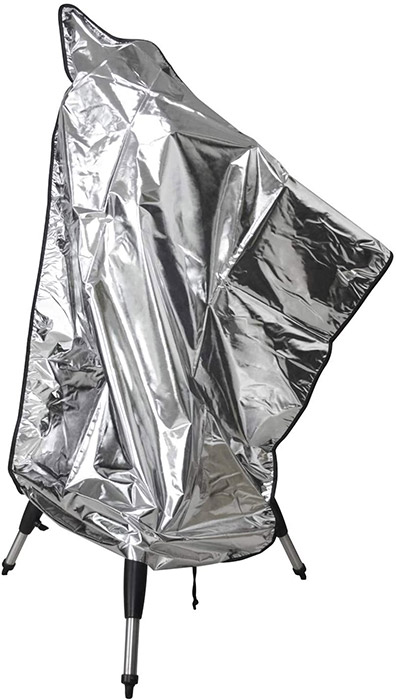
| Manufacturer | Astromania |
| Waterproof | Yes |
| Washable | Yes |
| Sunlight coating | Yes |
| Thermally stable | Yes |
| Fixing strap | Yes |
| Price |
As mentioned above, I personally own the largest version of this cover and use it for my Celestron Advanced VX 9.25″ SCT. It’s been great.
It has all the features of a specialty cover. It is waterproof, fully washable, thermally stable, and fully coated. But the best part about it is really the price. It costs half as much as the covers from premium brands, and while those to be honest are slightly better, the difference does not justify such a big jump in price. The Astromania has a much better value to price ratio, and that’s why it’s our pick for this category.
Astromania offers this cover in 3 different sizes, 23.8″, 30.1″, and 37.6″. The one linked below is the 30.1″ version that will fit telescopes of up to 1000mm in length and 203mm of aperture that will fit most hobbyist-level telescopes. Still, measure yours just to make sure before buying.
When you analyze it up close, you can tell the cloth is double layered and reasonably thick.
While the cover is durable, don’t expect it to withstand a whole season outdoors. It’s not made for that and that’s just true for all telescope covers. They are not made so you can keep your telescope outside permanently, they are made for indoor use and maybe, just maybe so you can leave them out for a couple of days a year.
All in all, it’s hard to go wrong with this cover.
Best of the best: Orion Cloak Cover For Large Telescopes

| Manufacturer | Orion |
| Waterproof | Yes |
| Washable | Yes |
| Sunlight coating | Yes |
| Thermally stable | Yes |
| Fixing strap | Yes |
| Price |
If you are looking for the most premium cover to protect a telescope worth several hundred or even thousands of dollars, Orion has the solution for you.
Orion is one of the most popular optics brands on the planet. Their products are great, I have tested and reviewed a few on the site. They know the ins-and-outs of telescopes better than most people so they also understand how to take good care of them.
The Orion cloak cover all the same features you would expect. Waterproofing, sunlight reflection, thermal stability, etc. But the other covers also have most of those features, so what’s the difference?
It really comes down to the quality of the materials. The fabric is much thicker, I’m no expert, but I believe it is triple-layered.
The coating is also much better. An issue that you might run into with some covers is that the silver outer layer starts to crack and fall in some places after a few washes. I didn’t get the chance to test it, but the coating does look like it will last longer.
The only issue I have with this cover is the price. It is high. But is it worth it? well, I believe that really is up to you. Personally, I would only get it for a very expensive telescope, but if yours cost the same or slightly more than the cover then there are better ways to spend that money.
This cover is made for telescopes with an aperture larger than 120mm (6″). There’s a smaller version for refractors but it’s hard to find it in stock and I believe that for a small telescope it is definitely not worth it.
If you have the budget to spend. You won’t regret it.
Best Budget Pick: HABOPET Telescope Cover
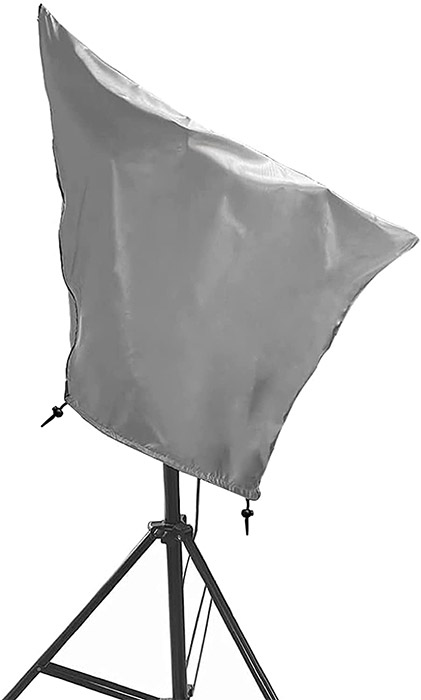
| Manufacturer | HABOPET |
| Waterproof | Yes |
| Washable | Yes |
| Sunlight coating | Yes |
| Thermally stable | Unknown |
| Fixing strap | Yes |
| Price |
If you don’t want to spend too much on a cover, this brand called HAPOBET has your back. To be honest, this is the first time I hear about this brand, but hey what’s important is the performance of the product.
For its price, this cover is still fully featured and it even has side zippers in case for some reason you want to use your telescope directly under bad weather. I don’t really like the idea of testing the limits of the cover or your scope under the rain, but if you are more adventurous than me, it’s a useful feature to have.
The HABOPET cover also claims to be fully waterproof and UV-reflective. As for waterproof, it does look like it meets expectations, but for the reflectiveness, I have my doubts. The coating seems a bit thin and I found no mention of it being thermally stable anywhere in the specifications so I’m not sure it can keep the telescope cool under sunny weather.
It comes in two sizes, a 39″ (990mm), and a 59″ (1500mm). That is the length of the tube, so make sure to know the dimensions of your device before buying. The price difference is minimal though, so if you have doubts, just go with the bigger model.
The HABOPET is a very good cover for the price. The cloth does feel the lower quality and thinner than the other picks in this list. I wish I could have more data on how it performs over a longer period of time to give a definitive answer on its value, but if you have a limited budget it seems like a solid choice.
Best for Dobsonians: Orion Telescope Cloak
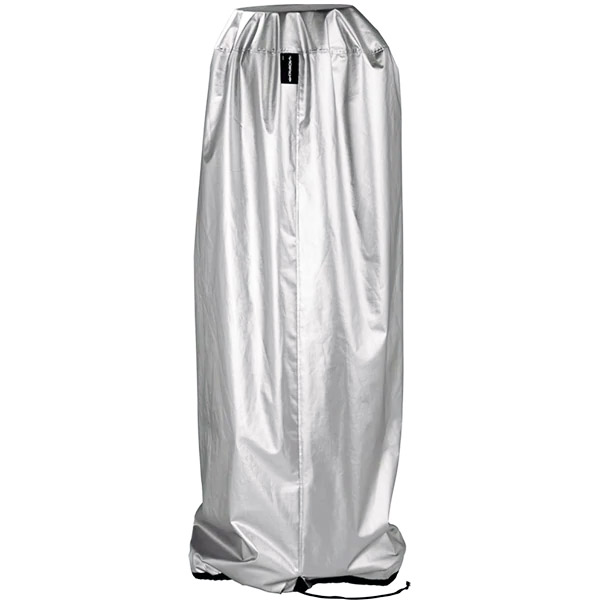
Dobsonian telescopes have a different shape than tripod-mounted ones so fitting them into a cover can be tricky. That’s why manufacturers have come up with specific covers for Dobsonians. That’s the good news.
The bad news is that there are much fewer options when it comes to selection. There are only really two brands that make Dobsonian covers: Orion and Telegizmos.
We went with Orion for our pick.
This cover has the exact same features and is made of the same material as the Orion Cloak Cover above so I won’t go into much detail about it. It’s an excellent product of the highest quality, but it does have the same issue. The price is a bit high for my comfort.
It comes in two sizes, one for 6″ to 10″ Dobsonians, and one for 12″ to 16″ ones.
Enjoyed this article?
Get daily 10-minute PDFs about astronomy to read before bed!
Sign up for our upcoming micro-learning service where you will learn something new about space and beyond every day while winding down.

